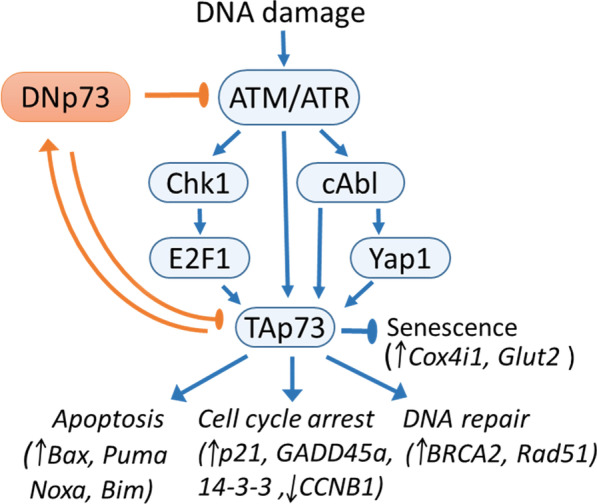Fig. 1.

DNA damage response and cell signaling pathways that regulate p73 activity. Arrows represent activation of the pathway, and brakes highlight repression of the activity. In pink are signaling that promote and in light blue are signaling that repress p73 mediated response to the DNA damage. In orange are signaling that promote and in blue are signaling that repress cell cycle progression. A DNA damage response induces ATM/ATR/c-Abl complex formation on DNA that leads to Tyr-99 phosphorylation of p73 [161–163] or ATM/ATR mediated activation of Chk1/2-E2F1 signaling cascade [25] and Yap mediated p73 activation [164]. In turn, TAp73/p53 mediated DNp73 induction repress ATM/ATR activation [52], and repress pro-apoptotic p53/p73 responsive genes [146], providing a negative feedback loop mechanism facilitating de-activation of the pathway upon DNA repair. Activation of the p73 by DNA damage halts cell cycle progression at checkpoints
